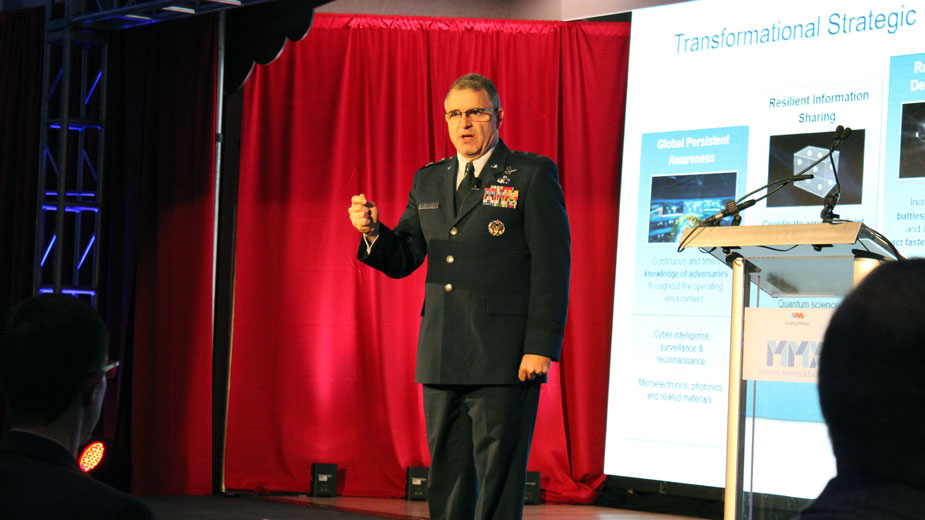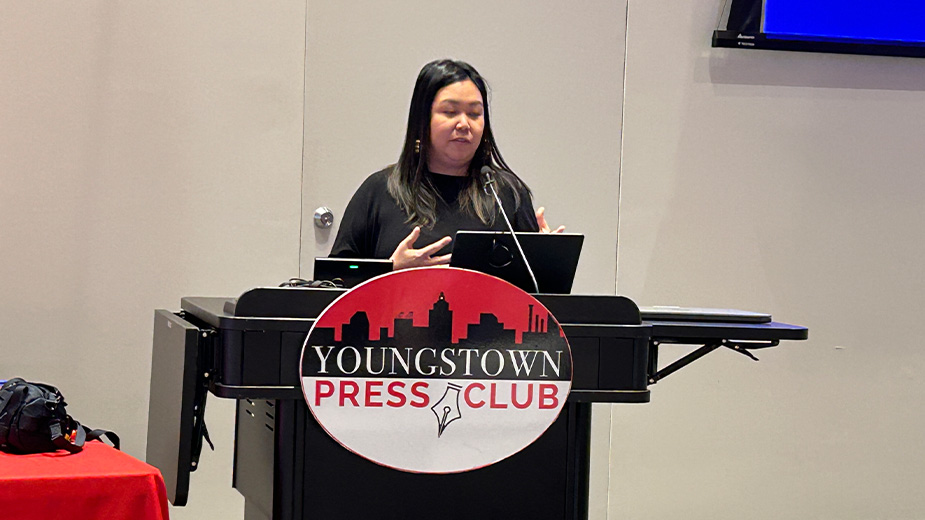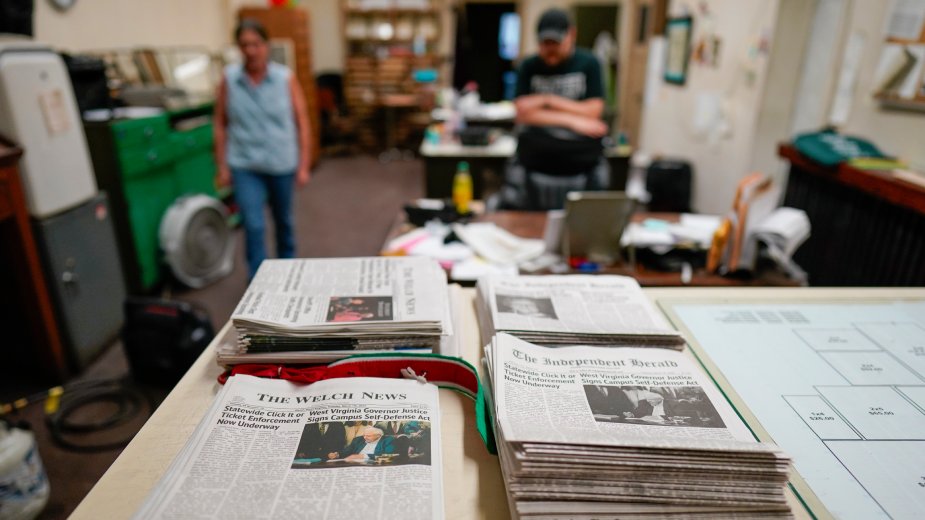As Tech Advances, Additive Manufacturing Is Top Tool for Military
YOUNGSTOWN, Ohio – If there’s one thing the United States military is working toward at all times, it’s readiness.
“You won’t hear the Navy speak too many sentences that don’t have to do with readiness,” said Alan Pentz, the additive manufacturing implementation lead for the deputy assistant secretary of the Navy. “When you go to fight, you don’t want to be in a situation where you don’t have everything available.”
And with the potential to cut turnaround times for replacement parts from a few weeks – longer if the destination is afloat hundreds of miles from shore – to a few days, all branches of the military are focusing on additive manufacturing.
At America Makes’ Membership Meeting & Exchange conference, Pentz pointed to an issue encountered with an F-35 fighter jet. During a post-flight inspection, the crew found a bump stop on the landing gear door had broken off. The only replacement option was to buy the entire door assembly, a $70,000 purchase that would take weeks to deliver.
“Instead, the Marines were able to design something that fit, print it, install it and get their aircraft back up in two days,” he said. “That might not be a permanent solution, but it’s a solution and you have feedback between the end-user and the original designer that can develop a better solution.”
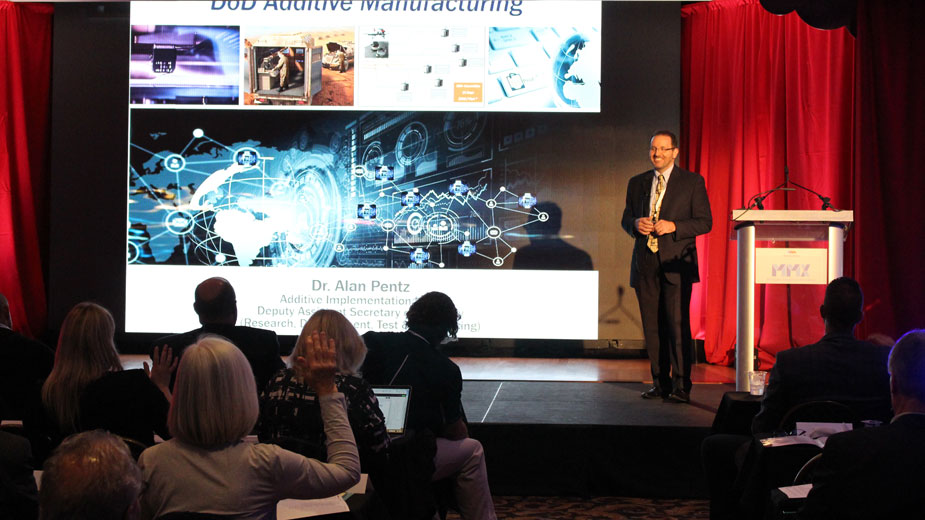
On Wednesday, Maj. Gen. William Cooley, commander of the Air Force Research Laboratory at Wright-Patterson Air Force Base, pointed to the military branch’s Science and Technology Strategy, unveiled in April. Designed as a road map for the military branch through 2030, it has three goals: “develop and deliver transformational strategic capabilities, reform the way science and technology is led and managed, deepen and expand the scientific and technical enterprise.”
“We don’t want to pick technology winners and losers. What we want to do is figure out what things will achieve transformational capabilities to win on the battlefield,” Cooley said.
Much of his talk at the MMX conference focused on threats from China, largely regarding its efforts to steal intellectual property from western organizations. When it comes to work with additive manufacturing, where soldiers, sailors and airmen could be pulling files from the cloud, cybersecurity is paramount, he added.
“We have a potential adversary who’s not just interested in military, not just interested in economics, but is interested in upsetting the world order that the West has put in place and built in regard to intellectual property and norms,” he said.
In the Army, work with 3D printing began with field units, observed Nelson Williams, chief of the branch’s sustainment maintenance division. There was no formal policy on how soldiers would get the files they needed or what they could print, Williams said.
“They were buying them off the shelves. Why? Because of problems in our supply system, obsolescence and platforms we thought we’re going to replace lasted longer,” he said. “We’re looking at it to augment our supply system.”
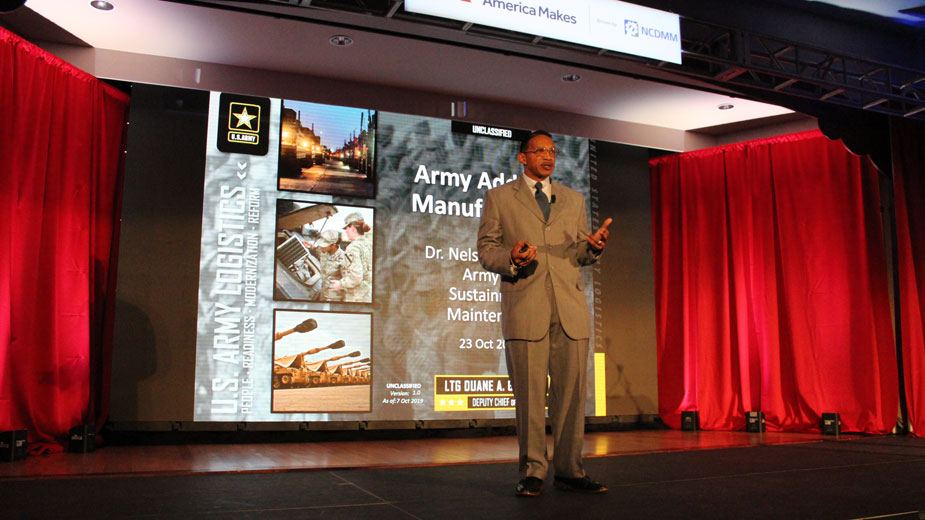
Today, the Army has a decision matrix that spells out how and when soldiers can use additive manufacturing to create parts as needed. An additive manufacturing policy is in the works and expected to be ready by the second quarter of 2021. What’s needed now, he continued, is help from industry professionals in developing qualifications, certifications and cybersecurity standards.
“How do we get this right? Some of the things we’re trying to do, you’ve already done. Some of the things we’re trying to perfect, you’ve already perfected. That’s why we need you,” he told the crowd.
Among the Navy’s goals for 2019, Pentz said, is making 1,000 parts available, 5,000 on an exchange server and 10 sites and eight ships with additive manufacturing capabilities.
“Each one of the services has been working on powdered titanium additive manufacturing,” he said. “A lot of that has been learning studies, but we’re at the place where we need to share not only amongst ourselves but with the greater industry so it can be taken advantage of.”
And for the Office of Naval Research, Jennifer Wolk, program manager for materials and processes for additive manufacturing, outlined the agency’s Quality Made program, aimed at developing frameworks for performance requirements for parts made through 3D printing.
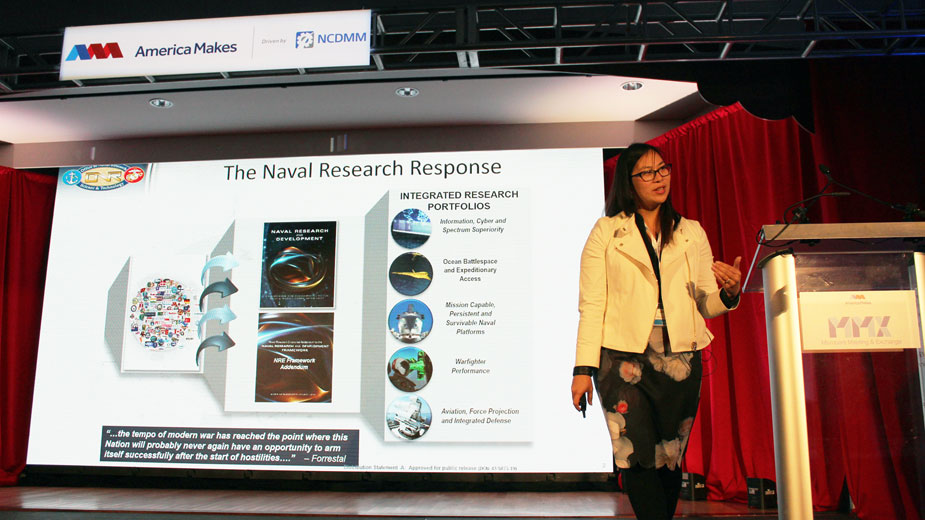
The four-year program, started last year, features three projects headed up by industry leaders. A group led by GE is examining how to optimize meltpools and variation control, while one led by CTC is developing a way to measure data flow with crystal tracking and a Lockheed Martin-led group is looking at how to use machine learning to build qualified parts.
“Qualification and certification, for the most part, has been building stuff, breaking stuff and showing your process has been locked down. Now, how can we say, ‘We’re interested in these parameters. Can you show us your control within them?’ ” she said. “How does it fit within the specifications of the Navy? How can we start to embed some of this understanding to answer questions exist from program offices and certifying authorities?”
Crucial to all these efforts, the four military representatives said, is the inclusion of private companies and academia, whether through America Makes or those working outside the Youngstown-based group.
“This is a team sport. We’ve got to work together as a whole nation,” Maj. Gen. Cooley said. “I’m really excited because America Makes and this activity really represents – better than just about anything else I’ve come across – that whole-nation approach. It’s government and industry and academia are all working together to ensure we maintain the technological and manufacturing advantage.”
Pictured: Maj. Gen. William Cooley, commander of the Air Force Research Laboratory at Wright-Patterson Air Force Base.
Copyright 2024 The Business Journal, Youngstown, Ohio.
